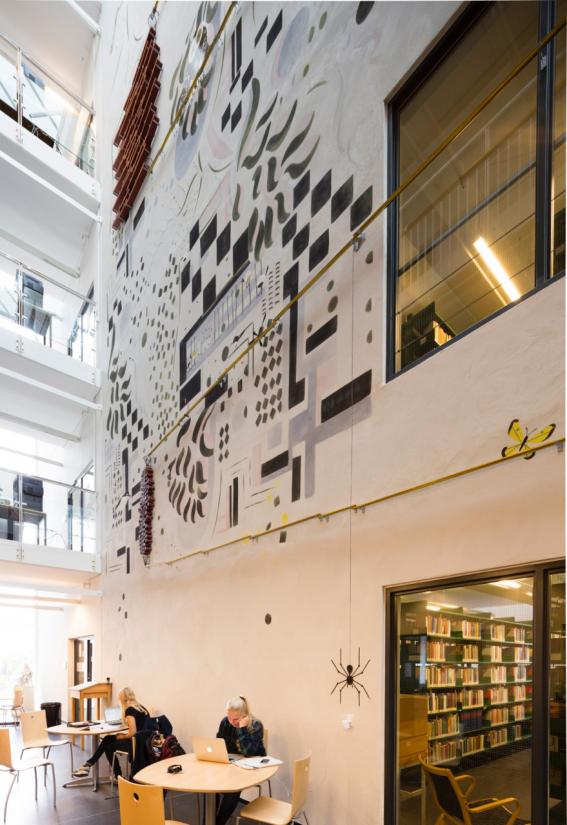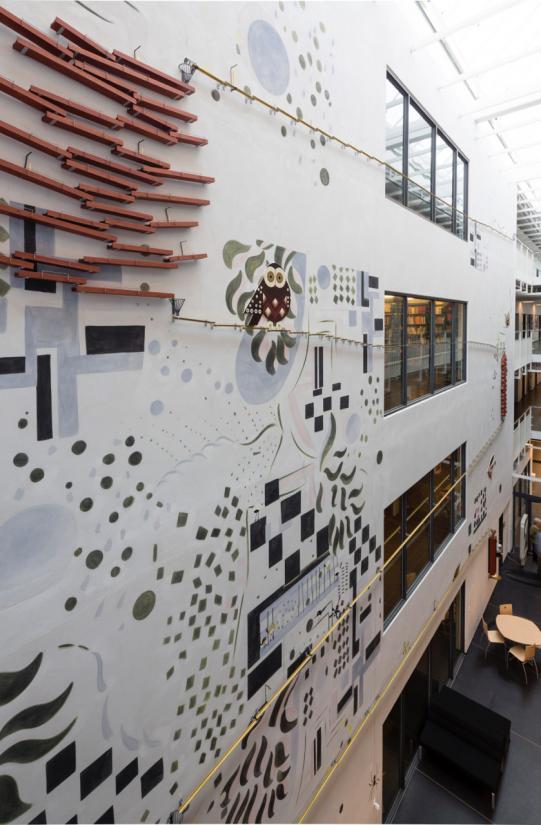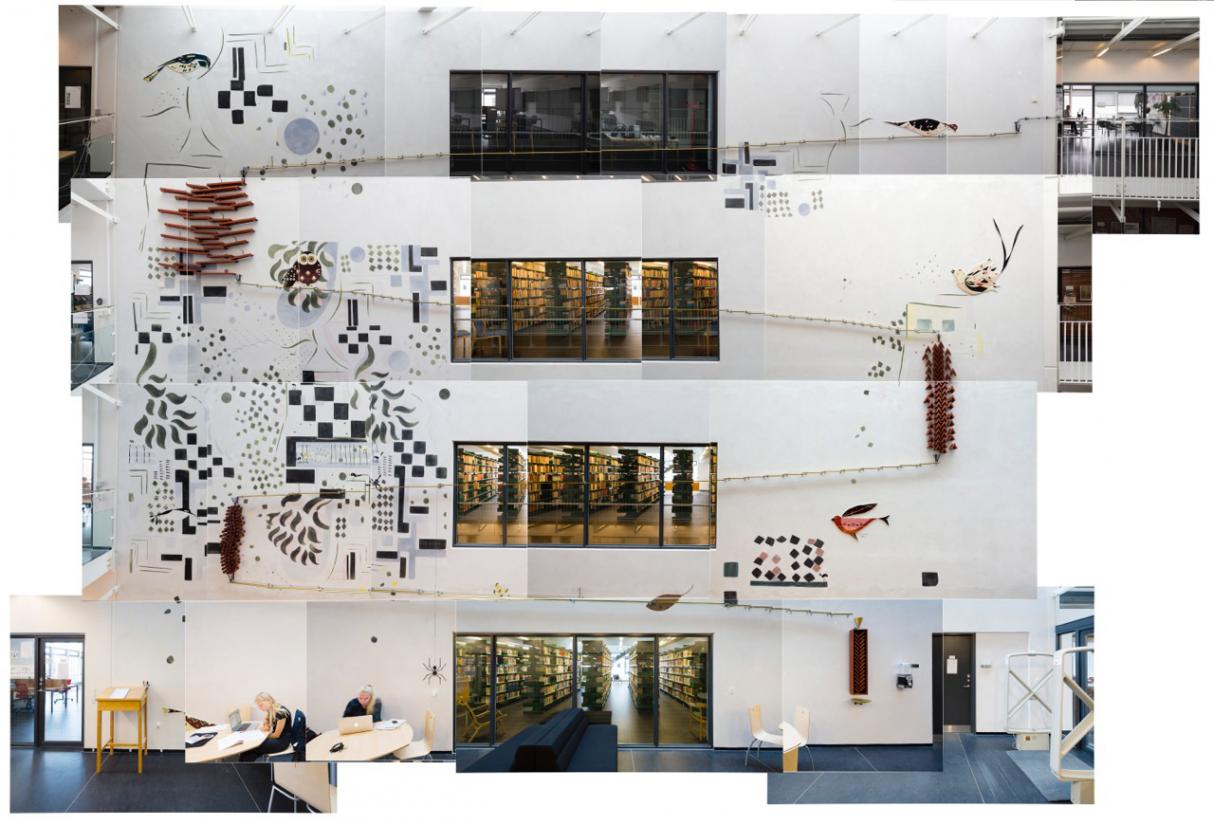Klangfrø [Sound seeds] is the title of artist Kirstine Roepstorff’s wall installation at the Department of Nordic Studies and Linguistics at the University of Copenhagen, Amager Campus, 120 Njalsgade, Building 22.
With its large glazed sections and white, streamlined walls, the building that houses the Department of Nordic Studies and Linguistics is, in one sense, a prototype of late modern architecture – minimalist and industrial – yet with multiple functions and types of rooms. The building features walkways, stairs, open passages, classrooms, a library, offices and entrance sections, using a wide variety of materials. Would a work of art be able to tie it all together, enhancing the identity of the place without simply becoming an added element that is either invisible or a distraction?
The New Carlsberg Foundation asked Kirstine Roepstorff to address this complex task, and she delivered the work Klangfrø, which is simultaneously a mural, a marble run, a sound installation and a spatial installation; a moving piece in every sense of the word that stretches over three floors in a central part of the building’s interior.
With help from a team of builders, stage designers and construction engineers, the internationally renowned artist first polished the concrete wall to create an attractive and slightly toned surface, then added stylized leaf, insect and bird motifs.
On this surface, she then mounted a marble run, which triggers the instinctive impression that it has to have a purpose, even though the zigzag relief made of brass and wood, interspersed with little sound-generating devices, is definitely a thing of beauty in itself.
Pick up a marble from the dispenser at the base of the work, and move to the fifth floor, drop the marble into the track, and enjoy the surprising sounds, rhythms and delicate notes as the marble makes its run.
‘The marble is like a seed that a bird might pick up, carry high into the air and then drop, causing something new and unique to sprout where it falls. That is the way it is with ideas, with thoughts, with everything that the university lives for,’ says Kirstine Roepstorff.





